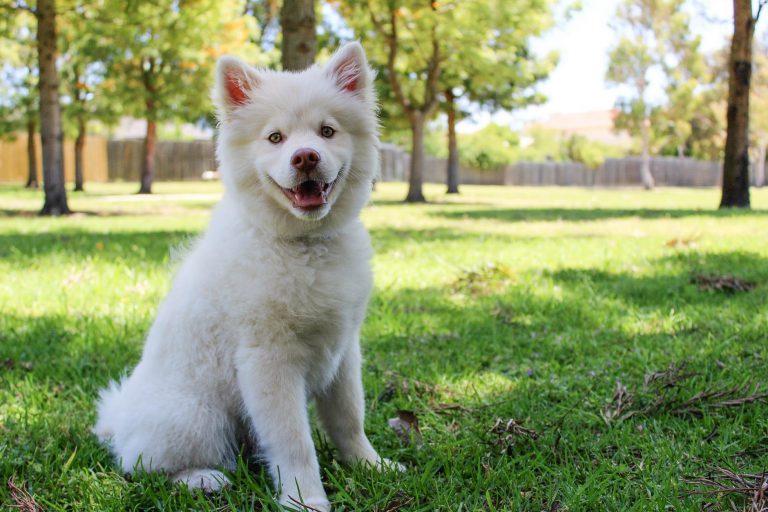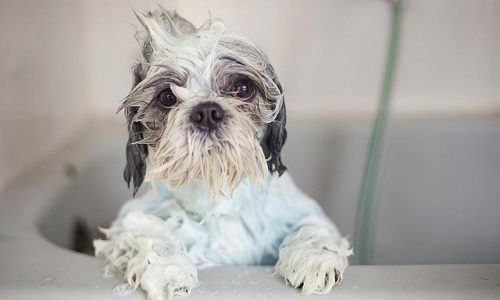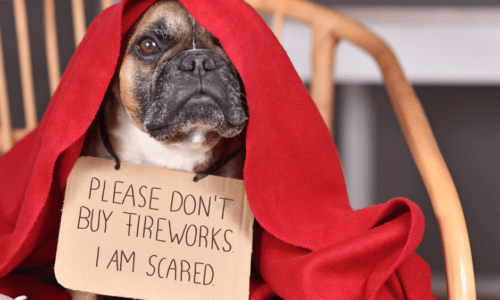Having your pets join you for summer activities can be fun and healthy for both of you. However, it is important to understand how your pet reacts to heat and know what precautions you should take to keep your pet cool this summer.
Water is Your Pet’s Best Friend
Unlike humans, pets can’t cool down through sweating. Instead, they release heat through their tongues by way of panting. Just like when humans sweat, the water released through this cooldown needs to be replaced. This is why it is so important to have fresh drinking water available for your pets. This is especially important following a long walk or car ride. It helps them stay cool and keeps their body temperature regulated.
Watch for Sunburn
It is funny to think that pets can get sunburned, but those with light-colored skin or hair are more susceptible to the sun’s rays. In some cases, extensive exposure to the sun can even result in skin cancer. There are several sunblocks on the market now that are pet-friendly. Talk to your vet about what would work best for your pet. Make sure that when you apply sunblock, you put it on unprotected areas such as their nose and ears.
Know the Symptoms
Heatstroke is a real concern for pets in the warmer months. Be aware of and watch for signs that your pet may be too hot. Symptoms include panting, difficulty breathing, vomiting, diarrhea, confusion, a rapid pulse, bright red gums or a blue tongue or lips. If you believe your pet has heatstroke you must act immediately. Move your pet to a cool place and lower their body temperature with cool, but not icy, water. Contact your vet immediately to ensure your pet stays safe.
Make Pools Safe
There is nothing better on a hot day than a dip in the pool. However, with adults, children and pets, pools can be dangerous if proper safety precautions aren’t put into place. This is especially important if you have an older pet who cannot get in and out of the pool as easily as they used to. If you don’t want your pet in the pool, place a protective fence around the water to keep them out. There are also ramps that can be used to make it easier for your pets to get in and out of the pool if they accidentally fall in.
Keep Pets Out of Cars
We’ve been talking a lot about this lately, but it is so important to never leave your pet alone in a parked car. In just a matter of minutes, your pet’s health can go from good to bad as the temperature in your car rises to dangerous levels. Pets are very sensitive to heat and leaving your pets alone in a hot car not only puts them at risk for heatstroke but could even lead to death. If you see a pet left alone in a parked car, immediately call 9-1-1.
Provide Some Shade
If your pets are outdoors quite a bit, they need to have a cool spot to relax and get away from the sun. A nice alternative for your pets would be a children’s plastic pool under a shade tree. They can get wet, keep their temperature low and relax in the shade. If you don’t have trees available, you will need to provide some sort of shelter for them to escape the sun and relax in a cooler place.
Avoid High Noon
Exercising your pet should never be done when the sun is at its strongest. Instead, choose times that are cooler for you and your pet such as early in the morning or in the late evening. Plus, be aware that hot pavement can hurt the pads of your pet’s feet. If you don’t want to walk on it barefoot then there is a good chance it is too hot for your pets.
Keep ’em Cool Cats
Your cat’s belly as well as their armpits, under their chin, outside of their ears and on the pads of their feet are the warmest areas on their body. Yes, we know cats are typically not fans of water. However, if you take a cool damp cloth and pet your cat with it from their head and down their back you can help to keep them cool.
Remember Your Feathered Friends
Birds naturally have a higher body temperature than cats or dogs so they typically fare better during the warmer months. However, an increase in their body temperature can cause heat exhaustion in your feathered friend. Make sure to keep their cages out of direct sunlight and keep fresh drinking water for them. If you want to give them a real treat, take a spray bottle and place it on the mist setting. Add some cool water and gently spray your bird. It will act as a nice way for them to cool down during summer.
Keep Small Animals Cool
Smaller animals such as rabbits and ferrets typically spend most of their time in cages. If you can’t keep your home cool enough for these pets, consider adding water to a plastic bottle and freezing it. Wrap a towel around the bottle and place it in the corner of their cage. Your smaller pets can lie close to the bottle and stay cool as the temperatures rise.
Brush Pets Daily
Brushing your cats and dogs daily, especially those with longer hair, is important in this type of weather. Matted hair can trap in heat and hinder your pet from cooling off. By brushing them daily, you are helping to prevent mats and keep air flowing freely to your pet.
For Farm Animals:
Keep Air Moving
Keeping livestock and farm animals cool in the heat can be challenging. Air circulation is key. By having fans blowing you can keep cool air blowing onto the animals. However, proper ventilation is a must to ensure the barn does not reach dangerous temperature levels.
Provide Options to Cool Down
Water pools, mud wallows or misting are all great options to help keep the temperature down of your farm animals. Make sure to use cool water and not cold water though. Extremely cold water can actually slow down the cooling process because it causes the blood vessels in your animal to constrict, which means less blood is cooled.
Always Have Water Ready
Fresh, clean and cool water can help dramatically in keeping your farm animals cooled down. Make sure you have enough room around where you water so that all of your animals can drink at the same time.
Give Lots of Shade
Animals are at a greater risk of heatstroke when they are in direct sunlight. By providing shade shelters for your animals, you are giving them an opportunity to escape the direct sunlight and cool down in the process.



